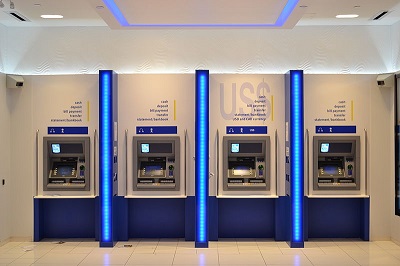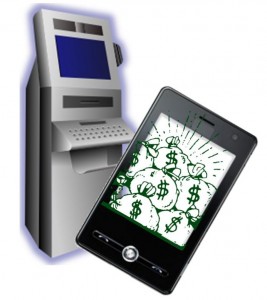According to the research from the UBS investment bank, smartphones could lead to widespread closures.
As a growing number of people start to use mobile banking as a regular part of their interactions with their accounts, it is now being predicted that hundreds of bank branches across Australia may be forced to close.
A survey was conducted by the UBS investment bank and it predicted more than 600 closures.
Analysts from UBS in New York, London, Japan, and Hong Kong partnered up with KPMG in order to produce a massive 54-page report that it has now published and released. Within it, 67 different bank management teams were surveyed across 18 different countries. Among them, there was an average expectation of a branch reduction of 5.6 percent as a direct result of the rise of mobile banking use.
That said, in Australia, that figure is predicted to be about twice the average of closures from mobile banking strategies.
 The report showed that despite the fact that Australia has seen a steady number of bank branches for quite a long time, the survey respondents feel that the country will be facing an 11 percent closure rate as a result of banking over smartphones and other mobile devices.
The report showed that despite the fact that Australia has seen a steady number of bank branches for quite a long time, the survey respondents feel that the country will be facing an 11 percent closure rate as a result of banking over smartphones and other mobile devices.
Based on June 2014 data from the Australian Prudential Regulation Authority, there were 5483 bank branches in the country at that time. Should the predictions of 11 percent be accurate, that would mean that there would be an estimated 603 branch closures across the country.
Because of this fear, many bank branches across the country have worked hard to reconfigure themselves in order to create a much more drop-in style environment and by reducing or removing tellers. This makes it possible for customers to be sold more types of products at their own convenience.
According to the UBS statistics over the span of the next three years, it could easily be that a cumulative reduction of costs by about 10 percent, as well as a boost of 6 percent rise in bank revenues. Over that same span of time, it is anticipated that there will reach the point that 46 percent of mobile related transactions, which Is an increase over the current 25 percent, and the 13 percent from 2013.
Recent data released by the Halifax Bank of Scotland revealed that this preference is maintained in-branch.
The most recent indication that mobile banking is becoming increasingly popular and that the traditional form of banking by lining up and speaking to a human teller is on its way out, has now been released in the form of some interesting data from Halifax Bank of Scotland.
What it showed is that customers would rather use their smartphones or an ATM than speak to staff.
In fact, that preference is strong enough that customers would still rather use mobile banking or an automated machine, even when they’re in a bank branch. The vast majority of interactions that customers have with their banks are over devices such as smartphones, tablets, laptops, and automated teller machines. In the branches, themselves, over half of the visits will include the use of one of the self service machines in order to pay using checks or cash. These are frequently chosen over the opportunity to speak with the human cashiers and other staff members.
Usually, mobile banking and other automated services are selected unless more detailed assistance is needed.
 It appears that consumers would prefer to use devices whenever possible, and that staff members are consulted only when complex products (such as mortgages, for example) or detailed financial advice is required.
It appears that consumers would prefer to use devices whenever possible, and that staff members are consulted only when complex products (such as mortgages, for example) or detailed financial advice is required.
Online accounts are accessed by mobile devices and laptops far more frequently than branch visits are made. In fact, the data from Halifax showed that it had experienced 69 million interactions with consumers throughout the month of June, at a daily average of 2.3 million. This is an increase of 47 percent over the same month, the year before. This indicates that not only are people choosing to access their accounts online, but they’re accessing them more frequently than ever4 before.
Among those interactions, a massive 57.2 percent were made over the mobile banking app, as consumers increasingly use their smartphones and tablets for making payments and checking balances while they’re on the go. Another 29.4 percent used desktops and laptop computers to do the same thing. Only a tiny 10.3 percent of the interactions were actually branch visits and an even smaller 3 percent contacted their bank by phone.
 The report showed that despite the fact that Australia has seen a steady number of bank branches for quite a long time, the survey respondents feel that the country will be facing an 11 percent closure rate as a result of banking over smartphones and other mobile devices.
The report showed that despite the fact that Australia has seen a steady number of bank branches for quite a long time, the survey respondents feel that the country will be facing an 11 percent closure rate as a result of banking over smartphones and other mobile devices.
 It appears that consumers would prefer to use devices whenever possible, and that staff members are consulted only when complex products (such as mortgages, for example) or detailed financial advice is required.
It appears that consumers would prefer to use devices whenever possible, and that staff members are consulted only when complex products (such as mortgages, for example) or detailed financial advice is required.